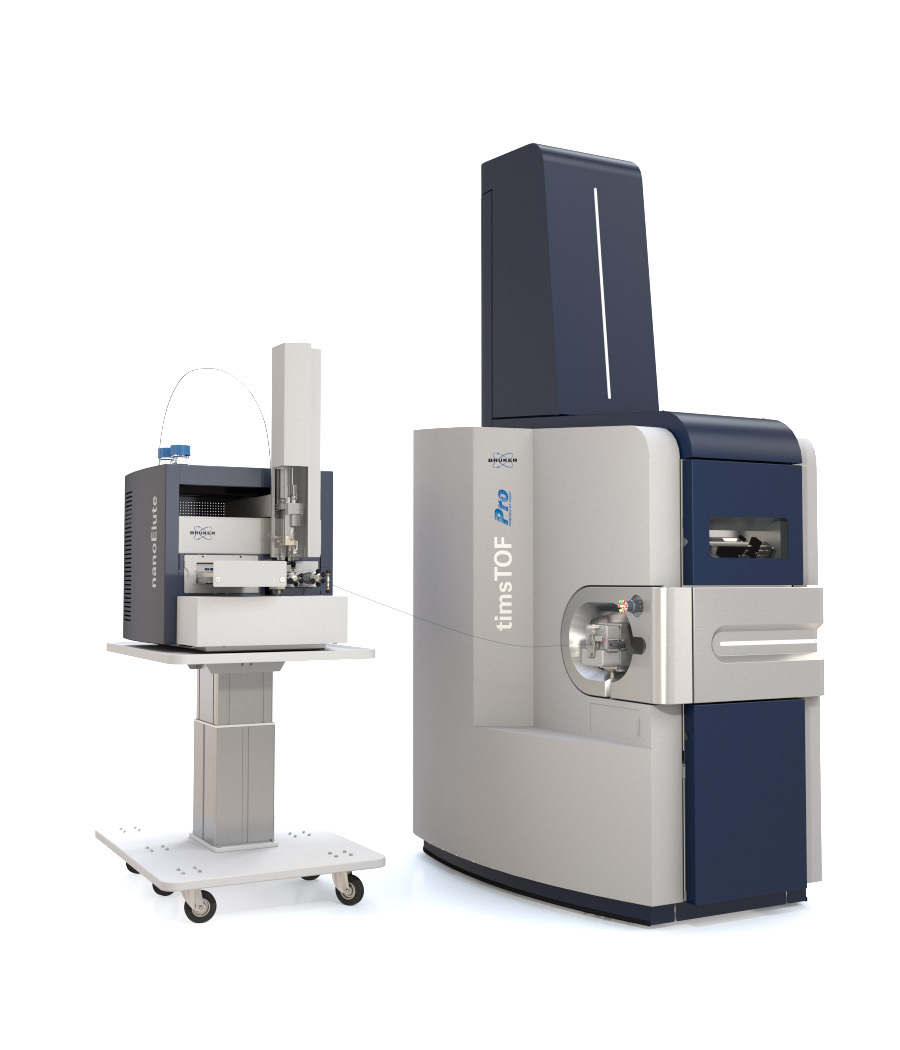认 证:工商信息已核实
访问量:12635
the timsTOF™ Pro Mass Spectrometer Enables the Revolutionary PASEF Method for Next-Generation Proteomics
Unique Trapped Ion Mobility Spectrometry (TIMS) Adds New Dimension for Robust, Faster Proteome Analysis with Higher Sensitivity
Overview
Powered by PASEF
Mass spectrometry (MS)-based proteomics has become a powerful technology for the identification and quantification of thousands of proteins. However, the coverage of complete proteomes is still very challenging due to the limited speed, sensitivity and resolution of current mass spectrometers.
The timsTOF Pro uses the Parallel Accumulation Serial Fragmentation (PASEF) acquisition method to provide extremely high speed and sensitivity to reach new depths in shotgun proteomics and phosphoproteomics using low sample amounts.
Achieve near 100% duty cycle for shotgun proteomics
A near 100% duty cycle for high sensitivity, high speed shotgun proteomics can now be achieved with the dual TIMS technology. The novel design allows for ions to be accumulated in the front section, while ions in the rear section are simultaneously released depending on their ion mobility. This process is called Parallel Accumulation Serial Fragmentation or PASEF.
PASEF digs deeper into the proteome
The timsTOF Pro powered by PASEF offers sequencing speed > 100 Hz without losing sensitivity by synchronizing the quadrupole isolation mass window with the elution time of the specific peptide packages from the TIMS funnel.
MaxQuant/Perseus and PEAKS Studio enabled data processing
An open-file data format allows researchers to directly work with the raw data and use industry leading software. MaxQuant has been adapted to manage 4D features in the space spanned by retention time, ion mobility, mass, and signal intensity which benefit the identification and quantification of peptides, proteins, and posttranslational modifications. PEAKS Studio combines de novo sequencingwith tradtional databbase searches and is optimized for processing timsTOF raw data.
Technical Details
Outstanding hardware performance
The second generation dual TIMS analyzer is optimized for shotgun proteomics needs. Due to its unique geometry ions are released dependent on their mobility from the second section of the TIMS analyzer while the further incoming ions can be accumulated in parallel in the first part of the TIMS analyzer. With the parallel accumulation technology a duty cycle up to 100% can be achieved resulting in no ion loss.
In the timsTOF Pro an advanced segmented quadrupole mass filter is used for high ion transmission and isolation efficiency. The quadrupole mass position is synchronized with the elution times of the specific ions from the TIMS analyzer. Due to its ultra-high mass position switching time (< 1 ms) it enables the best performance for the PASEF method.
TIMS
Trapped Ion Mobility Spectrometry (TIMS) is first and foremost a separation technique in gas phase, which resolves sample complexity with an added dimension of separation in addition to HPLC and mass spectrometry, increasing peak capacity and confidence in compound characterization.
PASEF
With speed in mind, Bruker experts redesigned MS/MS technology to meet the requirements of shotgun proteomics. Peptide ions are separated using trapped ion mobility spectrometry, eluted (~ 100 ms) and detected in the QTOF, generating the TIMS MS heat map (A). In the PASEF method (B) the same TIMS separation is used with the quadrupole isolating a certain ion species during its elution and immediately shifting to the next precursor. Parent and fragment spectra are aligned by mobility values. With the Parallel Accumulation Serial Fragmentation (PASEF) Technology >100 Hz sequencing speed can be achieved. With the PASEF method the MS/MS spectra quality of the low abundant peptides can be increased by selecting them several times.
- 推荐产品
- 供应产品
- 产品分类



